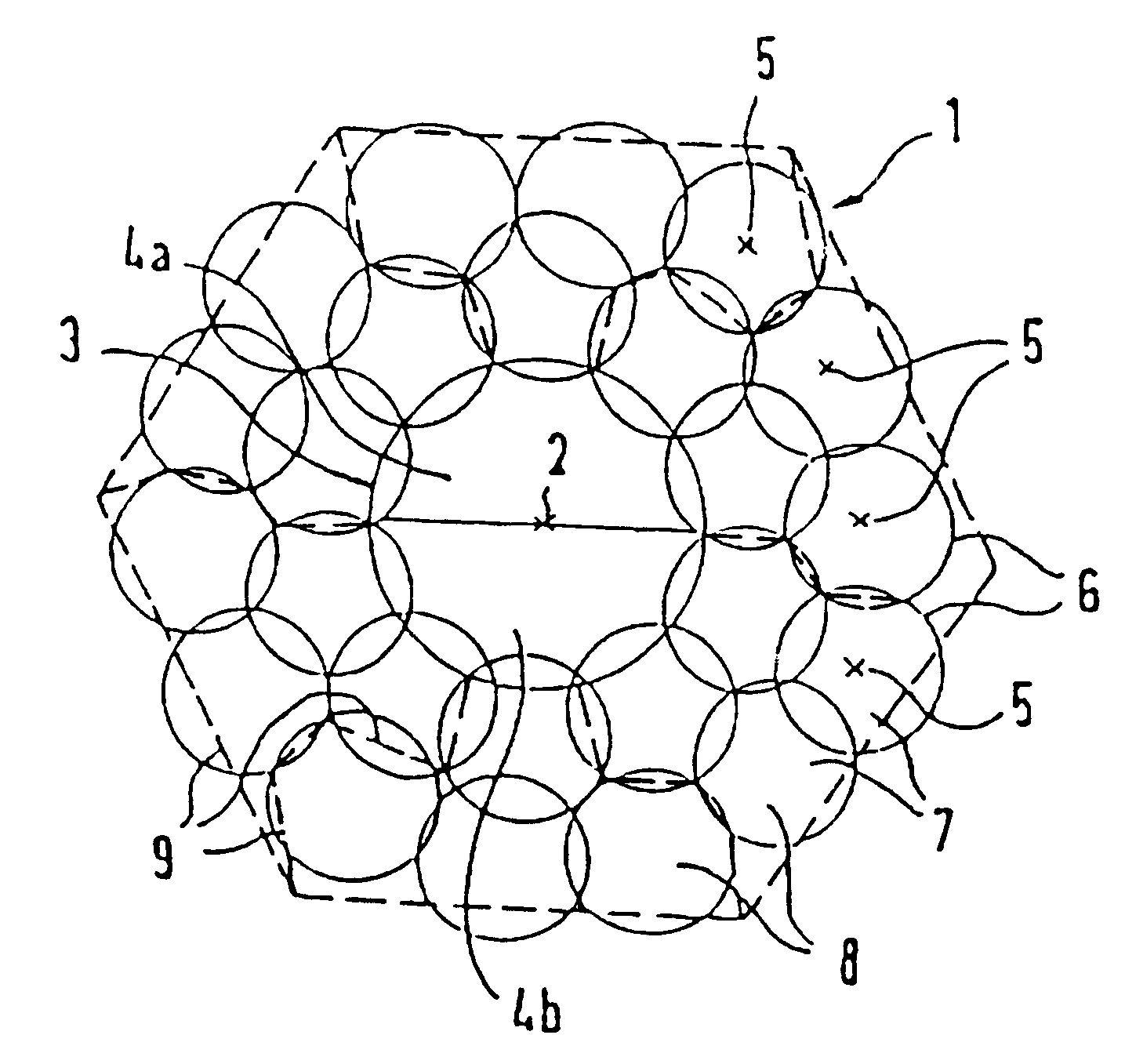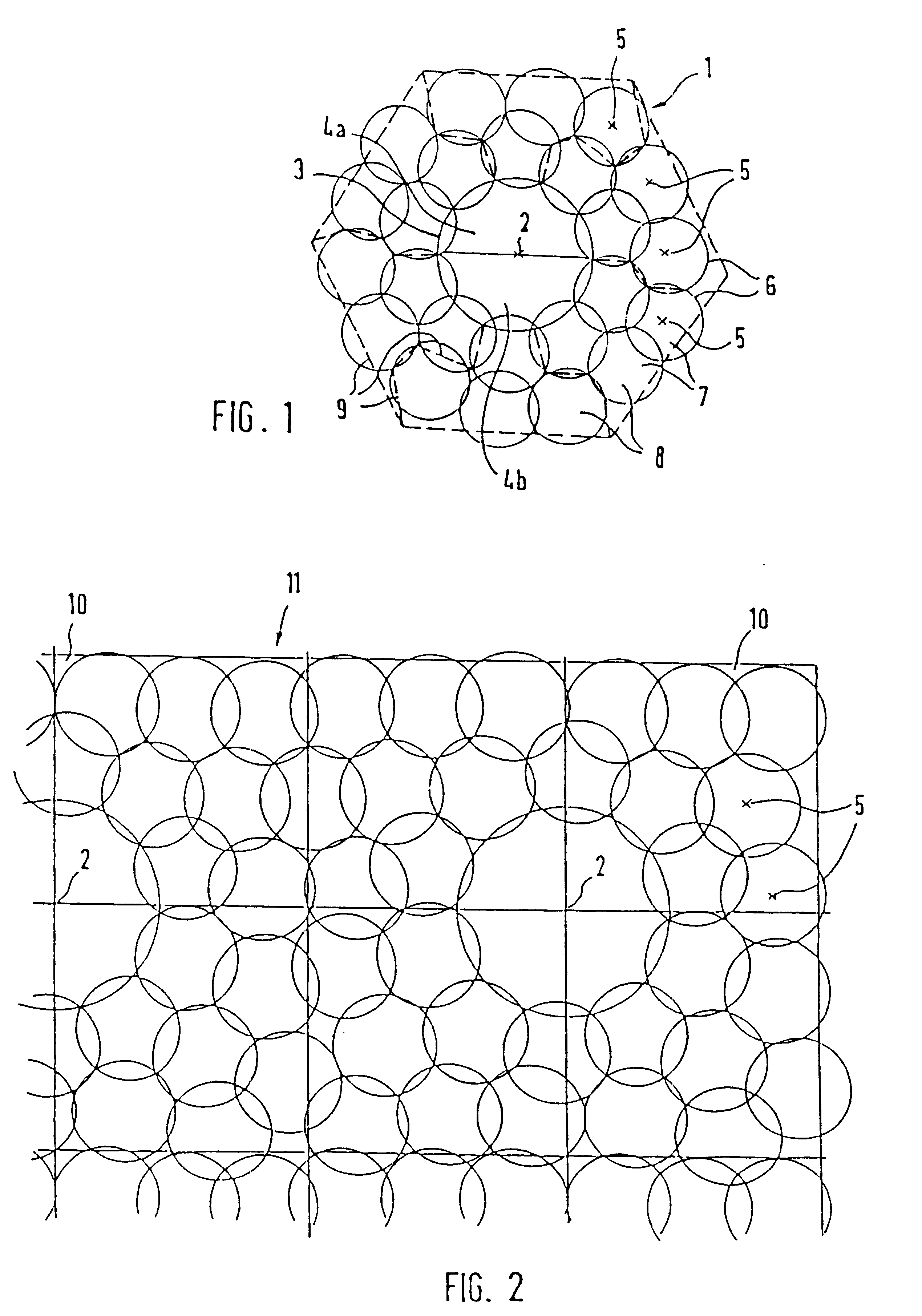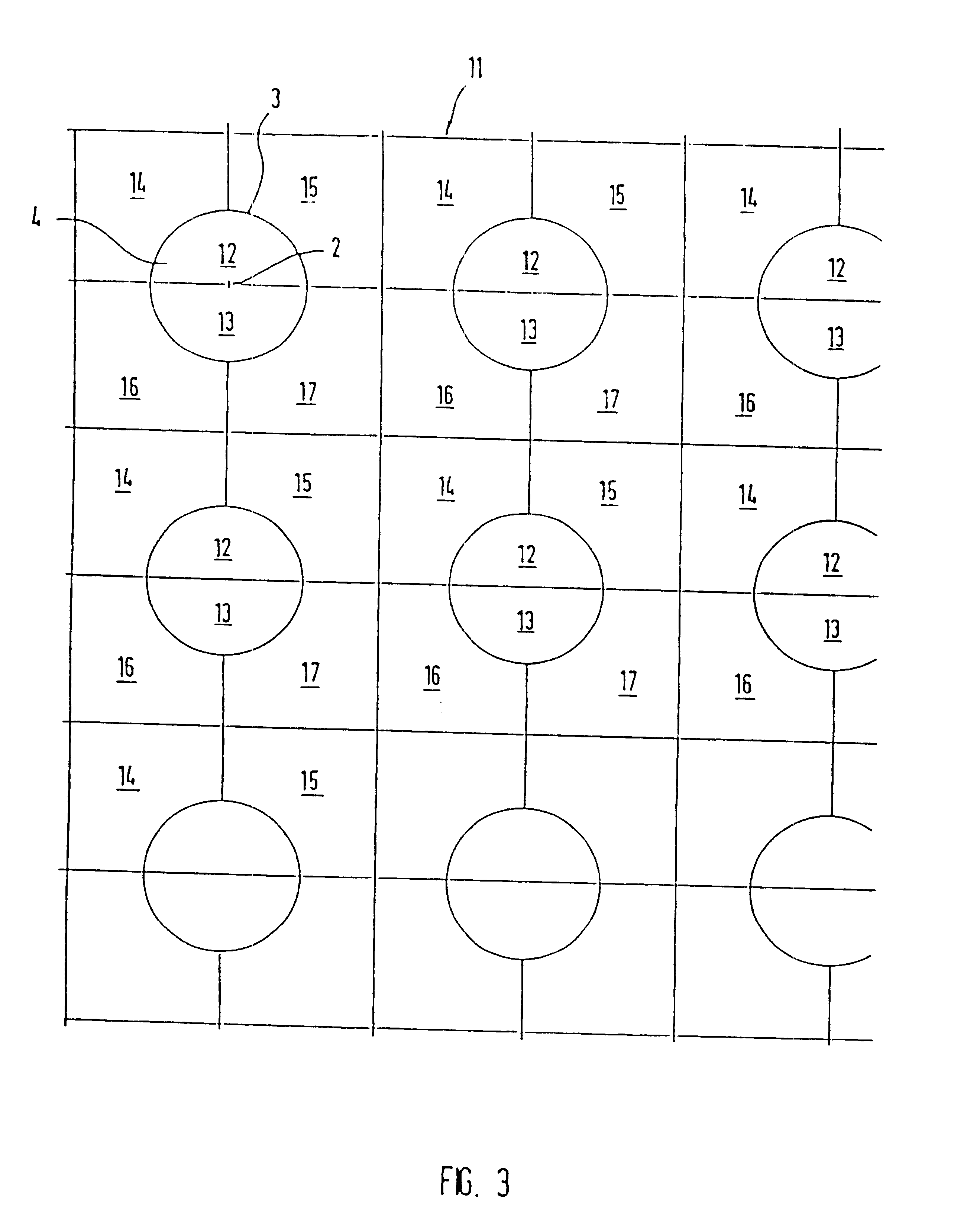Arrangements of base transceiver stations of an area-covering network
- Summary
- Abstract
- Description
- Claims
- Application Information
AI Technical Summary
Benefits of technology
Problems solved by technology
Method used
Image
Examples
Embodiment Construction
FIG. 1 shows an elementary cell 1, a large number of which can be joined together in lines to form an area-covering radio network having an approximately honeycomb structure. In the centre of the cell 1 is a base transceiver station 2, which is coupled via cable or radio link to a base station controller (not shown). By means of two directional aerials having a range 3, the central transceiver station 2 serves the inner cells 4a and 4b. Within the cells 4a or 4b, a mobile station (not shown) communicates direct with the central transceiver station 2.
In the case shown in FIG. 1, the central transceiver station 2 is surrounded by decentral transceiver stations 5, each having an identical range 6. In the arrangement shown in FIG. 1, the ranges 6 of the decentral radio stations 5 are approximately half as large as the range of the central radio station 2, which is achieved by suitable setting of the levels of transmission power. Thus the ideally circular cells 7 of the decentral transce...
PUM
 Login to View More
Login to View More Abstract
Description
Claims
Application Information
 Login to View More
Login to View More - Generate Ideas
- Intellectual Property
- Life Sciences
- Materials
- Tech Scout
- Unparalleled Data Quality
- Higher Quality Content
- 60% Fewer Hallucinations
Browse by: Latest US Patents, China's latest patents, Technical Efficacy Thesaurus, Application Domain, Technology Topic, Popular Technical Reports.
© 2025 PatSnap. All rights reserved.Legal|Privacy policy|Modern Slavery Act Transparency Statement|Sitemap|About US| Contact US: help@patsnap.com



